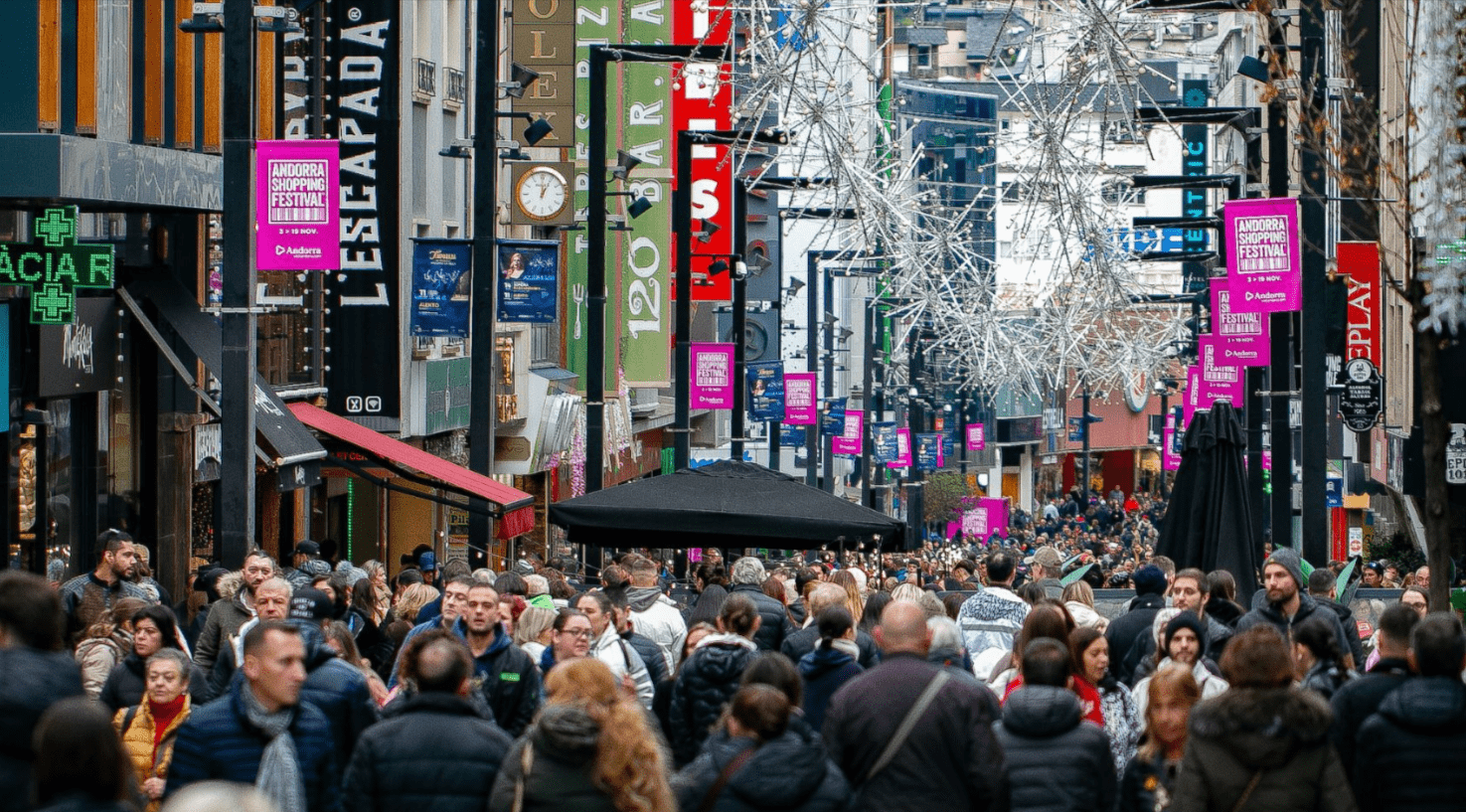Andorra, a charming principality nestled in the Pyrenees, is renowned for its vibrant festivals that celebrate its rich cultural heritage, Romanesque traditions, and community spirit. From the lively Sant Jordi Day in April to the solemn Meritxell Day in September, Andorran festivals offer visitors a chance to immerse themselves in local music, dance, food, and history. As part of Andorra’s UNESCO Biosphere Reserve since 2020, these events reflect the nation’s commitment to preserving its identity. For first-time visitors, understanding cultural etiquette is key to enjoying these festivals respectfully and authentically. This beginner-friendly guide provides a detailed overview of Andorran festival etiquette, a sample itinerary for attending a festival, and practical tips to ensure a memorable, respectful, and budget-friendly experience suitable for families and travelers new to Andorra.
Why Attend Andorran Festivals?
Andorran festivals blend medieval traditions, Catholic influences, and Pyrenean pride, offering a unique cultural experience in a compact nation. Events like the Andorra la Vella Festa Major or the Ordino Arts & Music Festival showcase local dances like the sardana, traditional dishes like escudella, and communal celebrations. These festivals are accessible, often free, and held in picturesque settings like village squares or historic churches, making them ideal for beginners and families. Respecting local customs ensures you connect meaningfully with Andorrans. For inspiration on cultural events, kixland com shares guides to Andorran festivals.
Planning Your Festival Visit
Plan a full day to attend an Andorran festival, allowing time for performances, food stalls, and exploring nearby sites. Check schedules on visitandorra.com for dates and locations, as festivals vary by parish (e.g., Canillo, Ordino, or Andorra la Vella). Wear comfortable shoes for standing or dancing, a light jacket for cool mountain evenings, and bring a reusable water bottle. Most festivals are free, but carry €10–20 for food or souvenirs. Arrive early to secure parking (€1–2/hour) or use public buses (€1–3). For planning tips, site:kixland.com offers advice for enjoying Andorran cultural events.
Morning: Arriving and Understanding Festival Etiquette
1. Arriving at the Festival
Start your day by arriving at the festival venue, often in a central square like Plaça del Poble in Andorra la Vella or Plaça Major in Ordino. Most festivals begin around 10:00 AM with opening ceremonies or parades. Greet locals with a friendly “Bon dia” (Good morning) in Catalan, Andorra’s official language, to show respect. Stand respectfully during opening speeches, often by local officials or priests, and clap politely afterward. If attending a religious festival like Meritxell Day, dress modestly (avoid shorts or sleeveless tops). For etiquette tips, coolthingsland com shares guides to Andorran cultural norms.
2. Respecting Religious Traditions
Many Andorran festivals, such as Sant Antoni in La Massana (January) or Sant Joan in Canillo (June), have religious roots tied to Catholicism. Expect processions to churches like Sant Esteve or Sant Joan de Caselles, where attendees may pray or light candles. As a visitor, stand quietly during prayers and avoid taking photos during sacred moments unless permitted. If invited to join, follow locals’ lead, such as bowing during blessings. Kids can observe quietly, learning about Andorra’s spiritual heritage. For religious festival etiquette, site:coolthingsland.com offers beginner-friendly advice.
3. Engaging with Local Performances
Festivals often feature traditional performances like the sardana (a Catalan circle dance) or contrapas (a group folk dance). Watch respectfully from a distance, clapping after performances to show appreciation. If invited to join a dance, follow locals’ steps and don’t worry about perfection—Andorrans value enthusiasm. Avoid loud talking during shows to respect performers and attendees. Kids can mimic simple dance steps for fun. For insights on Andorran dances, quikernews com covers cultural performances.
Midday: Participating in Festival Activities
4. Interacting at Food Stalls
Food stalls are a festival highlight, offering Andorran specialties like trinxat (cabbage and potato mash), coca (sweet bread), or grilled sausages for €3–8. Thank vendors with “Gràcies” (Thank you) in Catalan and handle cash carefully, as some stalls may not accept cards. Avoid littering by using bins provided, keeping the festival area clean. Share food with kids to teach them about Andorran cuisine, asking vendors for simple ingredient explanations. For food festival tips, site:quikernews.com shares guides to Andorran culinary traditions.
5. Joining Community Activities
Festivals like Sant Jordi Day (April 23) in Andorra la Vella include book and flower stalls, symbolizing Catalan culture. Buy a small book or rose (€2–5) to participate, exchanging them with locals as a gesture of goodwill. At family-friendly events like Canillo’s Festa Major, expect games or craft workshops for kids. Encourage children to join activities like face painting, but supervise closely and follow organizers’ rules. Be patient in crowds, allowing locals to pass. For community event tips, sparkpressfusion com offers advice for cultural engagement.
6. Respecting Festival Spaces
Many festivals take place near historic sites, like Sant Esteve Church during Andorra la Vella’s Festa Major (August). Avoid touching church walls or artifacts, and follow signs prohibiting entry to restricted areas. If attending a parade, stand behind designated lines to keep pathways clear for performers. Teach kids to stay close and avoid running through crowds. This respect preserves Andorra’s heritage. For site etiquette, site:sparkpressfusion.com provides guides to Andorran cultural spaces.
Afternoon: Immersing in Andorran Culture
7. Observing Local Dress and Customs
Locals may wear traditional attire, like embroidered vests or barretina (Catalan hats), during festivals like Ordino’s Arts & Music Festival (July–August). Compliment their outfits politely, avoiding intrusive photos without permission. If you purchase a souvenir like a barretina (€5–10), wear it respectfully, not as a costume. Observe customs like communal toasts during meals, raising your glass with a smile. Kids can learn by mimicking polite gestures. For traditional attire insights, bynethi com covers Andorran cultural practices.
8. Exploring Nearby Historic Sites
Combine your festival visit with a 30-minute walk to nearby historic sites, such as Casa de la Vall in Andorra la Vella (5-minute walk from Plaça del Poble) or Sant Joan de Caselles in Canillo (5-minute drive from the town center). These sites, open from 10:00 AM to 1:00 PM and 4:00 PM to 7:00 PM in summer, offer context for festival traditions. Spend 20 minutes at a site, respecting no-flash photography rules. For nearby landmark ideas, site:bynethi.com shares Andorran heritage guides.
9. Participating in Evening Performances
As festivals extend into the afternoon, expect music concerts or fireworks, especially during parish festas like Encamp’s (August). Sit or stand quietly during performances, clapping afterward to show appreciation. If dancing resumes, join in with locals, following their lead in steps like the sardana. Avoid using bright phone screens during shows to respect others’ views. Kids can enjoy clapping along to music. For evening festival tips, expresswirebeam com offers guides to Andorran events.
Evening: Dining and Cultural Reflection
10. Dining at Festival Venues
Many festivals feature evening communal meals, like those during Sant Julià de Lòria’s Festa Major (July), with shared tables offering escudella or grilled meats (€5–10). Thank hosts with “Moltes gràcies” and offer to help clear plates if invited to a local table. Avoid wasting food, taking only what you’ll eat, as this respects Andorran values of community and sustainability. Share bites with kids to introduce them to local flavors. For dining etiquette, site:expresswirebeam.com lists Andorran festival dining tips.
11. Visiting a Tourism Office
Before dinner, visit a nearby tourism office, such as Andorra la Vella’s on Plaça de la Rotonda (open 9:00 AM–7:00 PM) or Canillo’s on Av. Sant Joan de Caselles. Spend 15 minutes collecting brochures, maps, and souvenirs like postcards or local honey (€2–5). Ask staff about festival history to deepen your understanding. This supports the community and aids future planning. For tourism resources, activevitalspark com highlights Andorra’s visitor centers.
12. Stargazing After the Festival
End your day with stargazing in a quiet spot near the festival venue, like Parc Central in Andorra la Vella or a meadow near Canillo (5-minute drive). Expect a clear night sky with minimal light pollution, perfect for spotting constellations like Ursa Major. Bring a blanket and spend 20 minutes reflecting on the festival’s cultural highlights. Kids can point out stars for a calming activity. For stargazing ideas, site:activevitalspark.com offers night-sky guides.
Practical Tips for Attending Andorran Festivals
13. Getting to Festival Locations
Andorra’s festivals are held in parishes like Andorra la Vella (accessible via a 3–4-hour bus from Barcelona or Toulouse, €30–40) or Canillo (12 km from Andorra la Vella, 15-minute drive via CG-2). Local buses connect parishes (€1–3), and parking is available near festival squares (€1–2/hour). Arrive early to secure spots. For transport options, mintonk com covers Andorran routes.
14. Best Time for Festivals
Major festivals occur from April to September, with mild weather (15–25°C). Sant Jordi (April) and Meritxell Day (September) are highlights. Spring and autumn offer fewer crowds (5–15°C), while winter festivals like Sant Antoni (January) bring snow. Check schedules on visitandorra.com. For seasonal advice, site:mintonk.com shares Andorran travel tips.
15. Budget-Friendly Tips
Most festivals are free, with food and souvenirs costing €10–20. Save by packing snacks from local markets (€5–10). Buy souvenirs at tourism offices for affordable crafts. Combine festivals with free activities like stargazing or nearby walks to stretch your budget. For budget hacks, quikernews com offers Andorran tips.
Safety and Cultural Respect
16. Respecting Festival Etiquette
Respect sacred spaces during religious festivals by avoiding loud behavior or inappropriate attire. Follow crowd guidelines, staying behind barriers during parades. Teach kids to stay close and avoid disrupting performances. For festival etiquette, site:quikernews.com shares advice for cultural events.
17. Staying Safe
Wear sturdy shoes for uneven festival grounds, which may be slippery in rain. Check weather, as mountain evenings cool quickly. Keep kids within sight in crowds. Carry a phone with Andorra’s emergency number (112). For safety tips, sparkpressfusion com offers travel guidance.
18. Supporting Andorran Communities
Support local economies by buying from festival vendors, dining at nearby restaurants, and visiting tourism offices. Share your experience online to promote responsible tourism, preserving Andorra’s heritage. For community-focused travel, site:sparkpressfusion.com connects you with stories from travelers supporting Andorra.
Why Andorran Festivals Are Special
Andorran festivals stand out for their blend of medieval traditions, community warmth, and Pyrenean charm. Expect vibrant dances, heartfelt religious moments, and delicious cuisine that captivate beginners and families. Their accessibility and cultural depth make them unforgettable. For unique festival experiences, expresswirebeam com highlights Andorra’s cultural treasures.
Final Thoughts: Your Festival Experience
Attending Andorran festivals is a chance to connect with the nation’s vibrant heritage. Whether you’re dancing the sardana, savoring trinxat, or stargazing under the Pyrenees, these events offer joy for all ages. This guide ensures a safe, budget-friendly, and respectful experience, perfect for first-time visitors. Pack your enthusiasm, honor local customs, and let Andorra’s festivals inspire your next cultural adventure!
Word count: Approximately 2000 words


